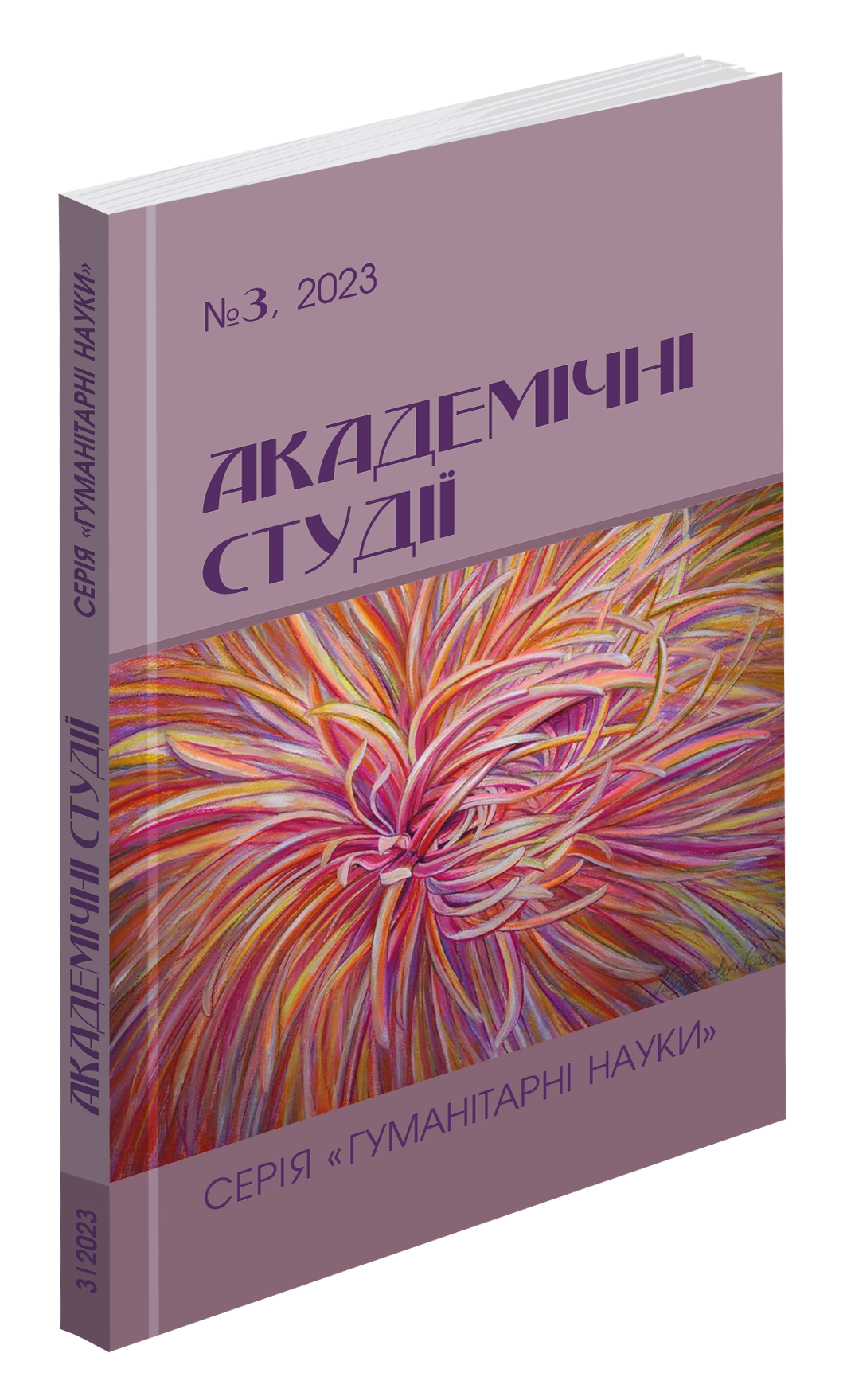Abstract
The article is devoted to paroemia as an element of the language and culture of each nation, which helps to study the history, culture and language of the people, as well as to expand vocabulary and develop language skills. The purpose of the article is to study proverbs and paremiaes in the system of phraseology of the English and Ukrainian languages in order to identify their role and significance in the culture and language of the two nations. The authors analyze the theoretical aspects of the peculiarities of proverbs and paremiaes formation in English and Ukrainian; common and different features of proverbs and paremiaes in English and Ukrainian speech; study the role and significance of proverbs and paremiaes in the culture and speech of peoples; determine the peculiarities of using proverbs and paremiaes in different genres of literature and speech of different social groups and the peculiarities of their translation. The main scientific results are obtained applying a set of general scientific and special research methods, namely: semantic and stylistic analysis, comparison, synthesis, induction, and deduction. In their study, the authors consider the paroemia as a special folklore genre characterized by such features as stability, reproducibility, and dissemination. The authors come to the conclusion that proverbs and sayings often use lexical items that are characteristic of a particular people and their culture. They relay a picture of the world that is inherent in this nation and reflected in its linguistic consciousness. The grammatical structure of English and Ukrainian proverbs and sayings has many similarities, such as grammatical tense and verb mood, but differs due to differences in the construction of the two languages. Each language has its own typical grammatical structures that distinguish it. The imagery of proverbs is achieved with the help of stylistic devices contained in their figurative basis. The main stylistic devices include metaphor, metonymy, and repetition.
References
Англо-український фразеологічний словник: близько 30 000 фразеологічних виразів / уклад. К. Т. Баранцев. Київ : Знання, 2005. 1056 с.
Колоїз Ж. В., Малюга Н. М., Шарманова Н. М. Українська пареміологія : навчальний посібник для студентів філологічних спеціальностей вищих навчальних закладів. Кривий Ріг : КПІ ДВНЗ «КНУ», 2014. 349 с.
Кущ Е. О. Англійські та українські паремії: етнокультурний аспект. Zaporizhzhia Historical Review. 2007. № 1. С. 519–520.
Метелюк І. В., Войцішук Ж. Джерела походження прислів’їв німецької мови. Наукові записки Національного університету "Острозька академія". Сер. : Філологічна. 2013. Вип. 37. С. 203–205.
Овсянко О. Л. Структурно-семантичні модифікації англомовних прислів’їв у художньому та публіцистичному дискурсах : автореф. дис. на здобуття наук. ступеня канд. філол. наук : спец. 10.02.04 «Германські мови». Запоріжжя, 2017. 21 с.
Орловська О. Англійські та українські паремії: порівняльний аспект. Актуальні проблеми філології та перекладознавства. 2016. № 10. С. 247–250.
Рогач О. Типи паремій та принципи їхньої класифікації. Актуальні питання іноземної філології. 2017. № 7. С. 143–148.
Скрипник Л. Г. Фразеологія української мови. К. : Наукова думка, 1973. 280 с.
Українська фольклористика : словник-довідник / уклад.-ред. М. Чорнопиский. Тернопіль : Підручники і Посібники, 2008. 448 с.
Шульга С. Я. Компаративні відношення на матеріалі українських та англійських паремій: зіставний аспект. Науковий вісник Міжнародного гуманітарного університету. 2015. № 19. С. 137–140.
Krikmann A. Some Additional Aspects of Semantic Indefiniteness of Proverbs. De Proverbio. 1999. Vol. 5. No 2. URL: http://www.deproverbio.com/display.php?a=3&r=97
Oxford Dictionary of Proverbs / edited by J. Speake. Oxford University Press, 2015. 416 p.

